Now, that we have our hands on Databricks’ latest AI Model DBRX, which they claim to be the world’s most powerful AI open-source model, here are some noteworthy insights we found.
For this test, we used the DBRX Instruct Model through HuggingFace. We prompted the model using the message box at the bottom of the page. The model will then generate a response and show it in the chat section.
Several use cases for this model are essential for programmers and an excellent tool to have on hand. Here are the results from the tests we conducted.
Use Case 1: Code and Explanation
As a model likely trained on a corpus of module documentation, this is one of the most fundamental functions a developer relies on. The model was tested on explaining existing functions and identifying algorithms for a particular problem.
We asked DBRX to explain what the given Python function does:

It successfully gave a correct explanation for the function:

Then, we asked it to suggest an efficient algorithm to solve a problem and provide it working:
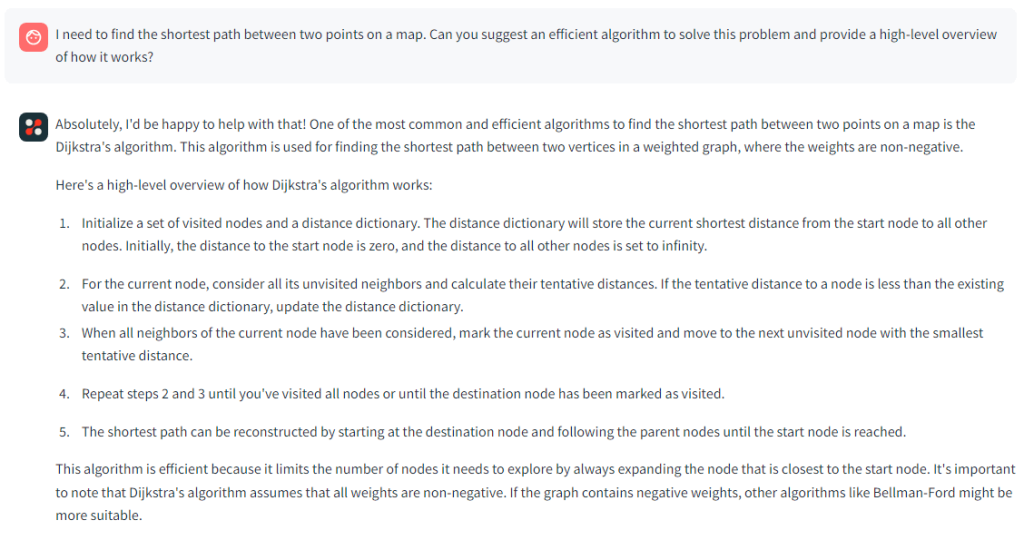
As we all know, Dijkstra’s algorithm is widely used to find the shortest path between any two points. DBRX suggested this algorithm and provided a perfect overview of it
Use Case 2: Code Generation and Conversion
Developers can leverage the vast codebase data that the model has learned to generate everything from basic algorithm implementation to API endpoint generation and code conversion. Code conversion is probably the most important tool for cross-platform integration as well as handling dependency errors.
We told DBRX that we wanted to implement the Observer Design Pattern in Java and then asked for a sample implementation:
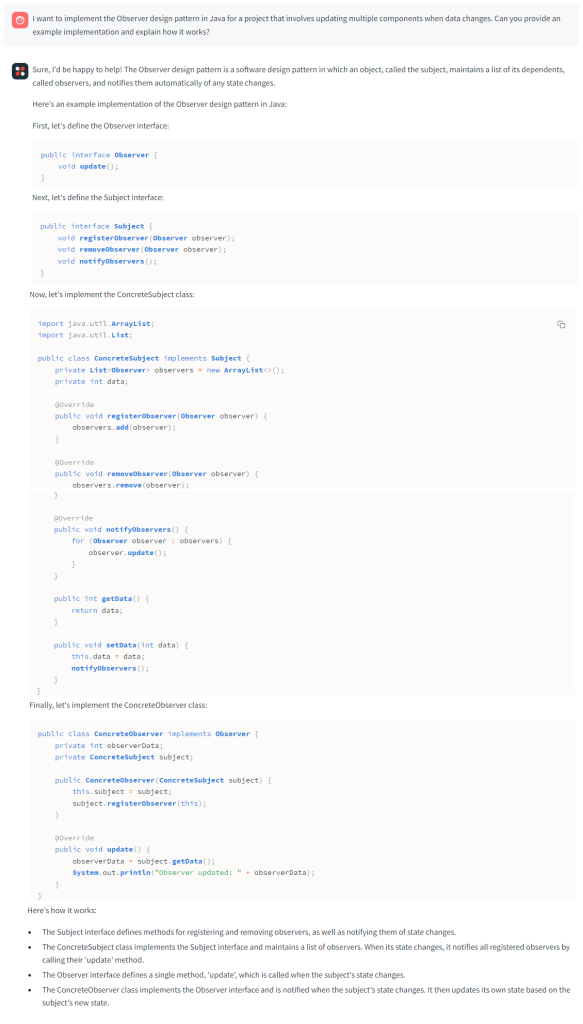
It successfully provided us with the code and a simple explanation.
Then, we asked DBRX to convert a Python function into its Java equivalent:
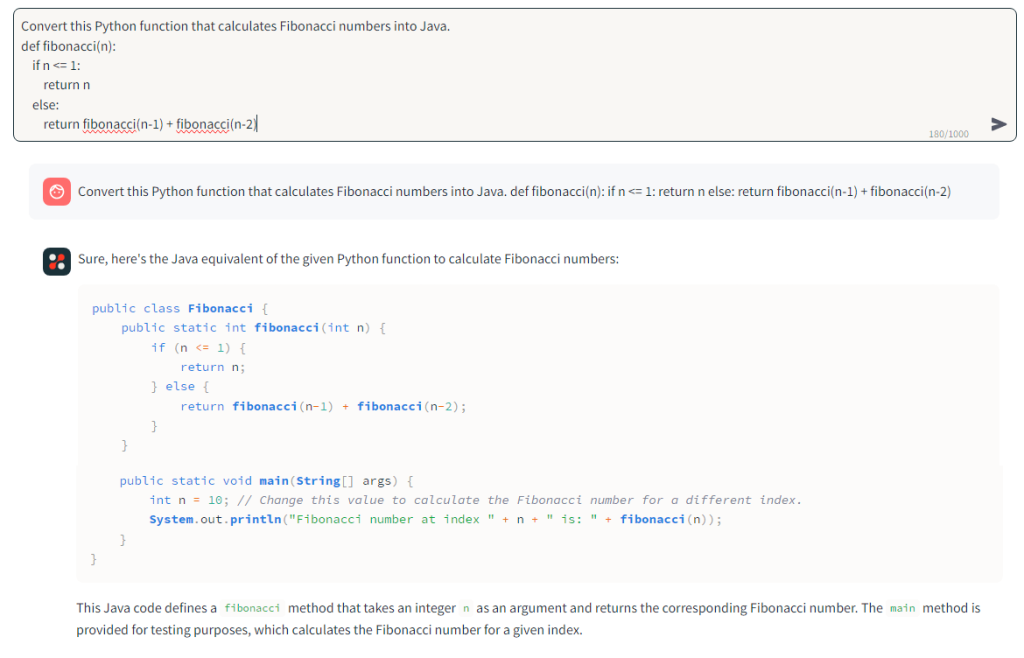
It was properly able to convert the function.
Use Case 3: Debugging with DBRX
Debugging through version problems, OS OS-based dependencies can extend the timeline of a project and cause many issues for devs. This model offers benchmark quality debugging and helps streamline the process by analyzing large blocks of code and immediately identifying the bugs, also offering corrections in the code.
We gave a Python code to DBRX along with the error message and asked DBRX to identify and fix the issue:
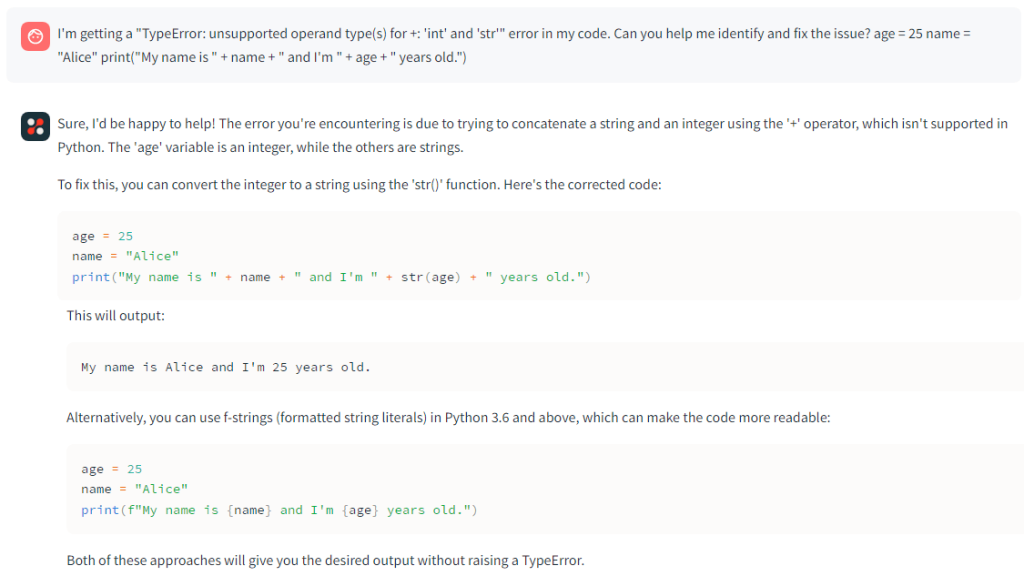
It found the expected bug and suggested the right solution for the same.
Second, we provided DBRX with messy code and asked it to refactor the code and make it more readable. It refactored the code by suggesting a different method, making it easy to comprehend:
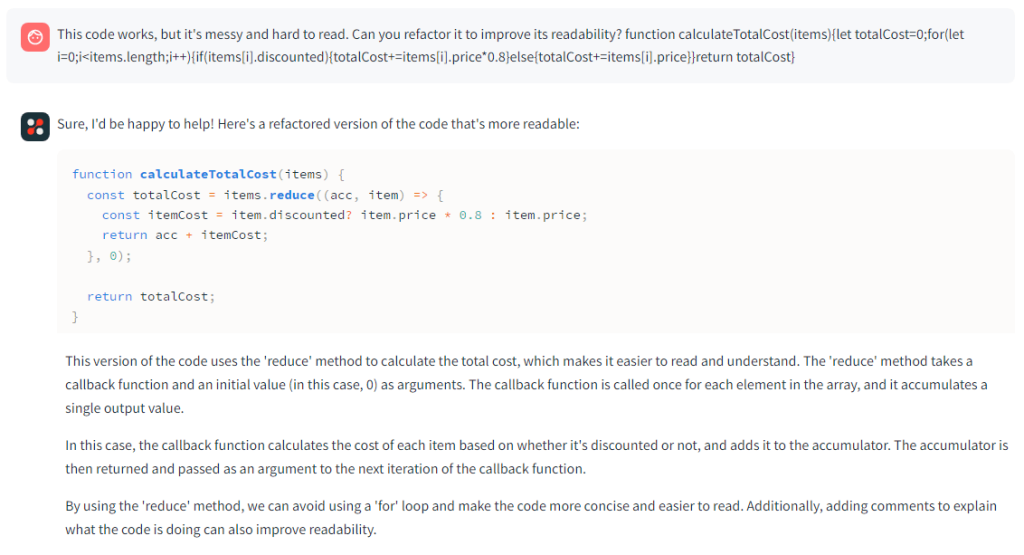
However, it didn’t make readability changes in the provided code itself.
Use Case 4: Query Optimization
Another feature to makes the lives of data engineers easier is the optimization of database queries. The model can optimize the queries easily based on the defined parameters leaving the data engineers free to focus on other essential tasks
We asked DBRX to rewrite the given SQL query to minimize execution time.
How can we rewrite this SQL query to minimize execution time when fetching data from a large database?
SELECT * FROM users WHERE age > 18;
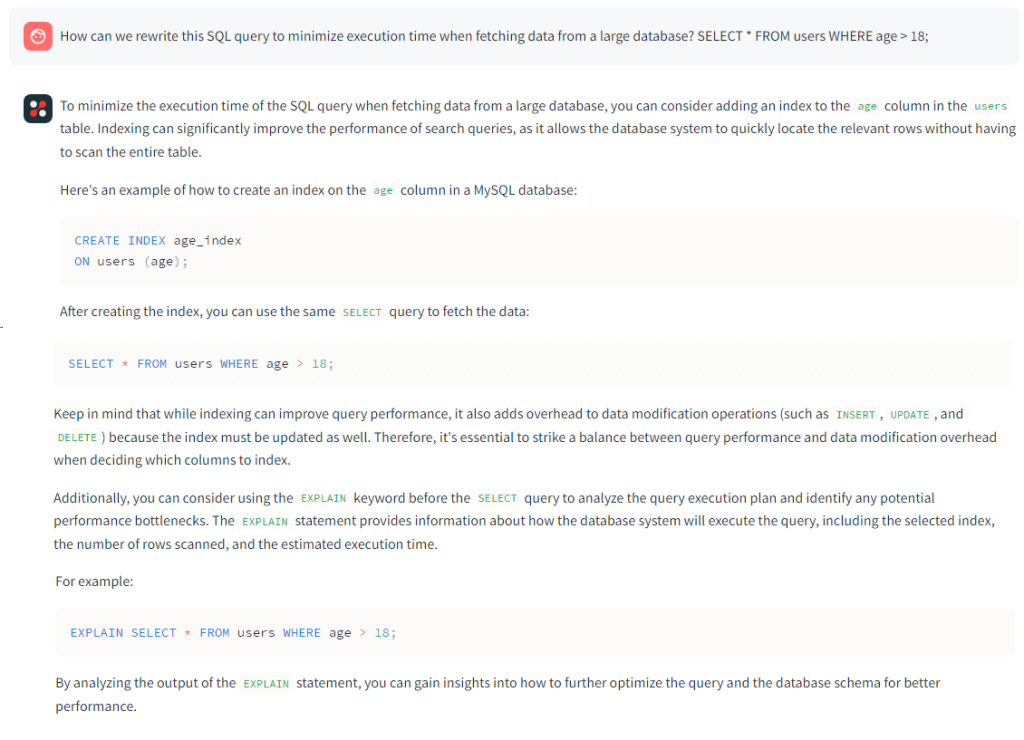
It suggested a way to minimize the time and also provided the potential downsides of the technique.
Use Case 5: Vulnerability Identification using DBRX
We told DBRX to point out any flaws in the given code for authentication and asked it to propose ways to mitigate the flaws. DBRX pointed out 5 different flaws and suggested ways to overcome them.
Point out any security flaws in this web application authentication process and propose ways to mitigate them.
def authenticate(username, password):
if username == "admin" and password == "password":
return True
else:
return False
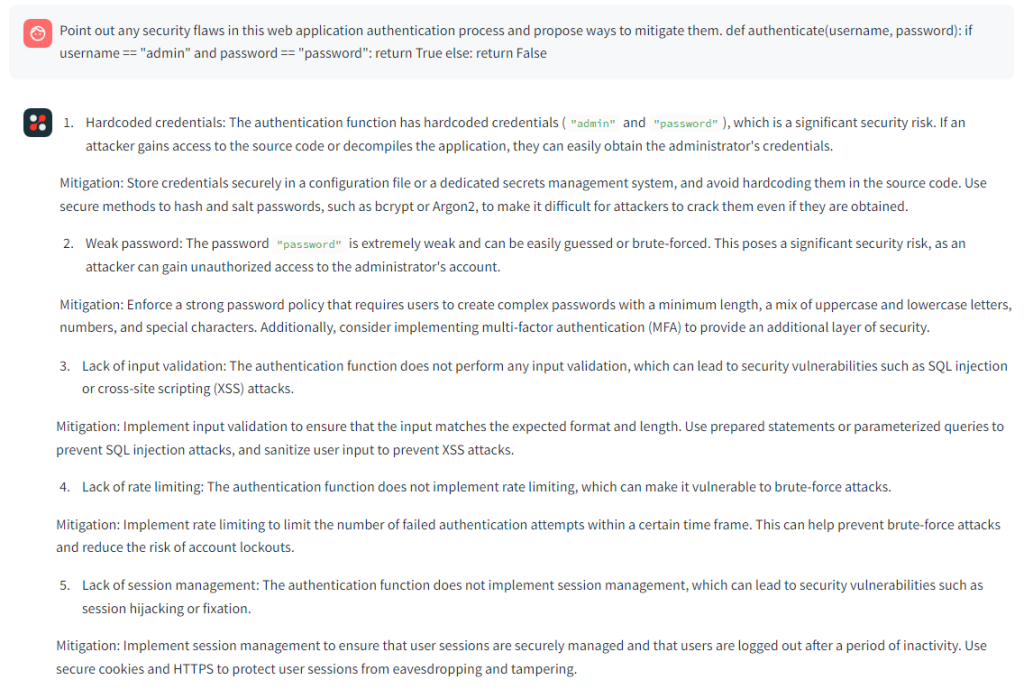
We asked DBRX to analyze the provided code and identify potential security vulnerabilities:
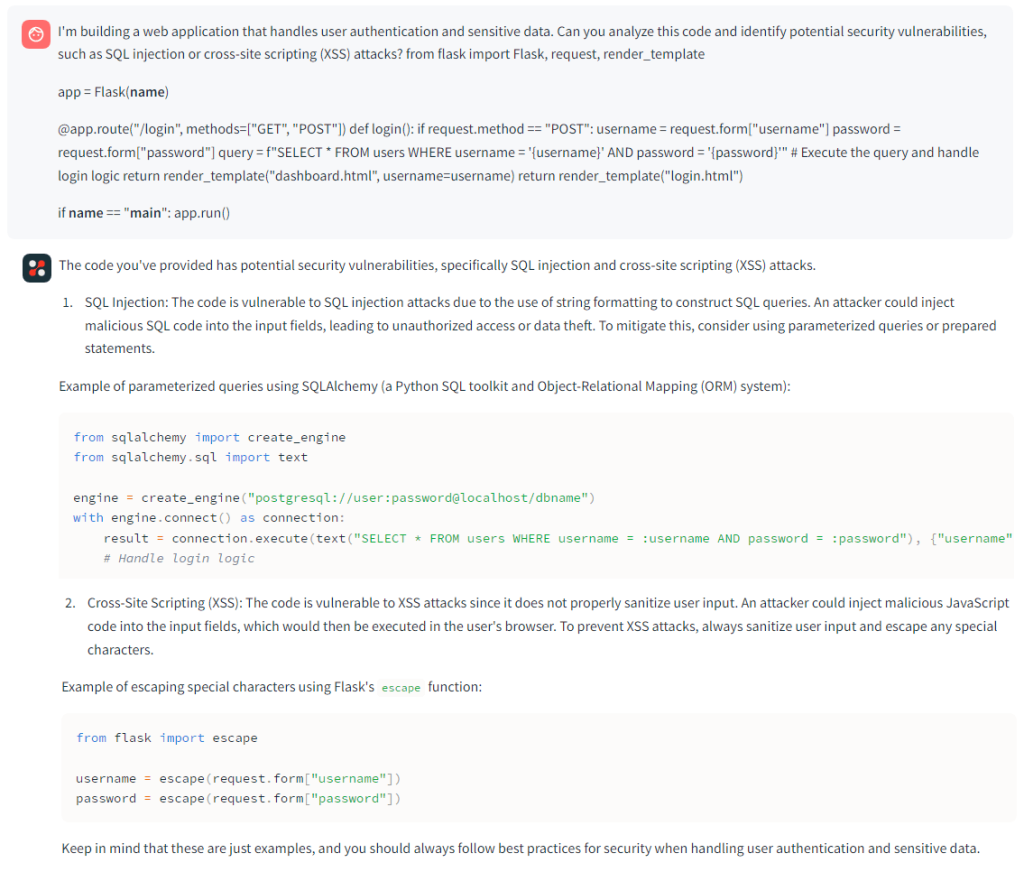
It provided a reasoning of why the vulnerabilities are occurring and then gave a solution for the same.
Conclusion
The test results confirm DBRX’s versatility in aiding software developers across a spectrum of tasks, including code explanation, code generation, code conversion, test case generation, error debugging, query optimization, vulnerability identification, and more.








